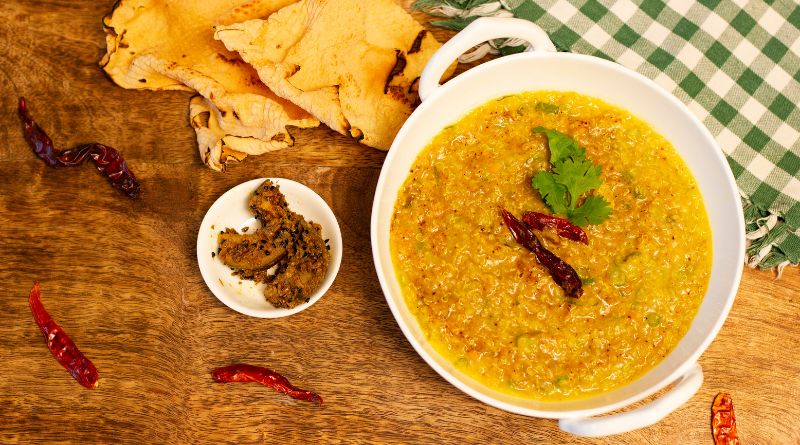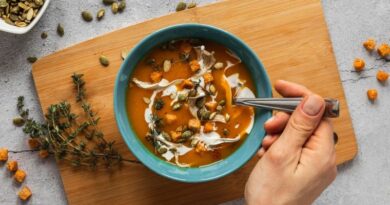Khichdi, also known as khichri, is a beloved South Asian dish that is made with a combination of dal (lentils), rice, ghee, and minimal spices. It is a one-pot meal that is not only delicious but also highly nutritious. In India, khichdi holds a special place in the hearts of people and is prepared in various states with their own unique twists and flavors.
This blog post explores 7 popular types of khichdi from different regions of India. Each state has its own version of khichdi, incorporating local ingredients and culinary traditions. From the savory Gujarati khichdi served with tangy and sweet kadi to the aromatic and flavorful Bengali khichuri, there is a khichdi for every palate.
Khichdi is not only a comfort food but also a versatile dish. It can be enjoyed as a standalone meal or paired with yogurt, pickles, or chutney. The combination of rice and lentils in khichdi provides a good balance of carbohydrates and proteins, making it a wholesome and satisfying option.
Yummiest Types Of Khichdi You Should Try
Khichdi, a humble yet hearty dish, finds its variations across India, reflecting the diverse culinary traditions of the country. From the rich flavors of Bengal to the comforting simplicity of Gujarat, each region adds its unique touch to this beloved dish. Let’s embark on a culinary journey to discover seven popular types of Khichdi that grace Indian tables.
Quick Link: Try This Yummiest Indian Recipe At Home Perfect For Winter Season
1. Bengali Bhog Khichuri
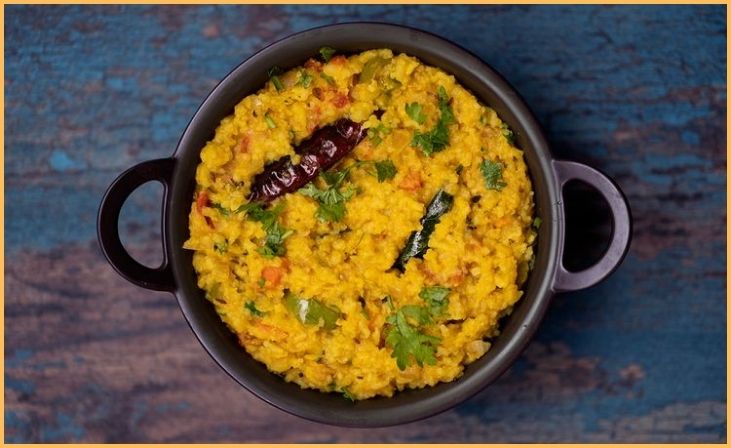
Bhog Khichuri stands as an essential component of Bengali festivals, with its prominence shining during the grand festivities of Durga Puja. Crafted from fragrant Gobindobhog rice, split yellow moong dal, and an array of mixed vegetables, this dish is a harmonious celebration on a plate. The preparation involves a meticulous blend of aromatic spices, infusing the Khichuri with a symphony of flavors. This traditional delicacy not only symbolizes festive feasting but also captures the essence of communal joy.
The Gobindobhog rice, renowned for its fragrance, adds a distinctive touch to the dish, elevating it to a cultural and culinary masterpiece. Bhog Khichuri is more than a meal; it’s a sensory experience that brings together the spirit of celebration and the rich tapestry of Bengali traditions. As a culinary cornerstone, it signifies the joyous connection between food, culture, and festivities in the heart of Bengal.
2. Gujarati Khichdi
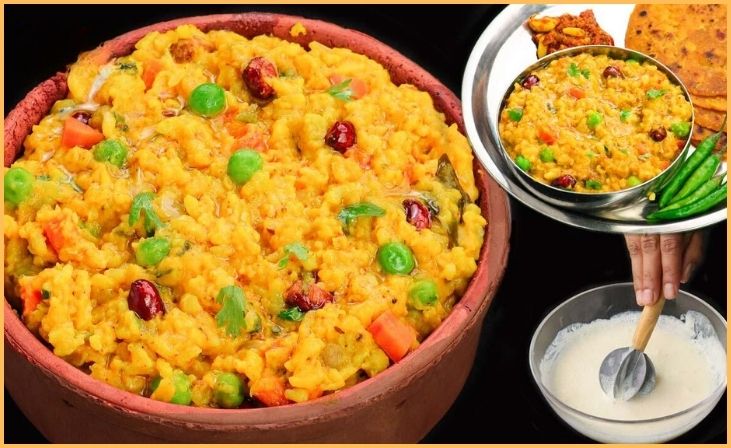
Gujarati Khichdi is a culinary embodiment of simplicity and comfort, resonating with the essence of home-cooked goodness. This staple dish harmoniously blends rice and yellow moong dal, creating a melange that captures the heart of Gujarati cuisine. The tempering of cumin seeds, mustard seeds, and asafoetida infuses the Khichdi with aromatic depth, elevating it beyond a mere meal to a comforting experience. Each bite encapsulates the traditional flavors that define the warmth of a Gujarati household.
As a classic representation of simplicity, this Khichdi speaks to the soul, providing not just sustenance but a nostalgic connection to the roots of homely culinary traditions. It stands as a testament to the art of transforming humble ingredients into a dish that radiates both familiarity and satisfaction. Gujarati Khichdi, with its uncomplicated charm, continues to be a cherished comfort on plates across the vibrant state.
3. Pongal
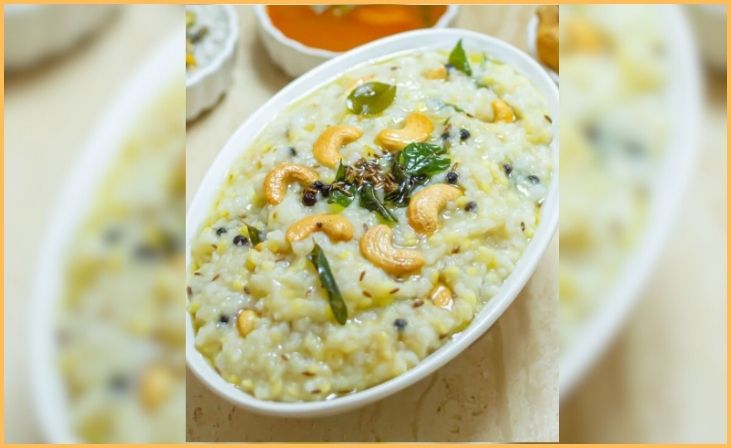
In Tamil Nadu, the traditional dish of Pongal elevates Khichdi to a culinary masterpiece. Crafted from a blend of rice, split yellow moong dal, and a symphony of aromatic spices including black pepper, cumin, ginger, and ghee, Pongal is a sensory delight. This dish, with its distinct flavors, captures the essence of South Indian cuisine, offering a unique and memorable culinary experience. The black pepper adds a spicy kick, while the cumin and ginger contribute depth, creating a harmonious balance of tastes.
Pongal not only satisfies the palate but also symbolizes the rich cultural and agricultural heritage of Tamil Nadu. With each spoonful, Pongal stands as a testament to the art of combining simple ingredients to create a dish that is both comforting and rich in tradition, celebrating the flavors of the southern state.
4. Sabudana Khichdi
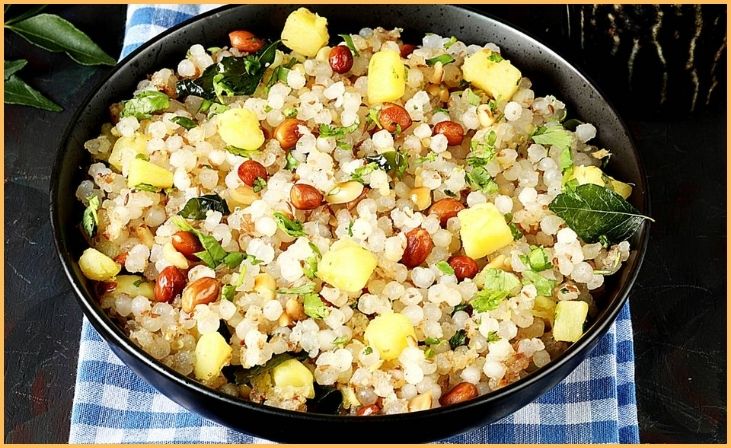
Stepping into the limelight during fasting periods, Sabudana Khichdi emerges as a star. Tapioca pearls, soaked to a delightful texture, are artfully combined with peanuts, potatoes, and an array of spices. This dish, a festival favorite during Navratri, transcends seasonal boundaries to become a year-round delight. The amalgamation of ingredients, including the crunch of peanuts and the earthy flavor of potatoes, transforms Sabudana Khichdi into a culinary masterpiece.
Beyond its role in religious observances, the dish stands as a versatile and beloved option for those seeking a flavorful and satisfying meal without compromising dietary restrictions. As a celebration on the plate, Sabudana Khichdi exemplifies the art of transforming fasting into a delightful gastronomic experience, capturing the hearts and taste buds of those who indulge in its unique charm.
5. Bisi Bele Bath
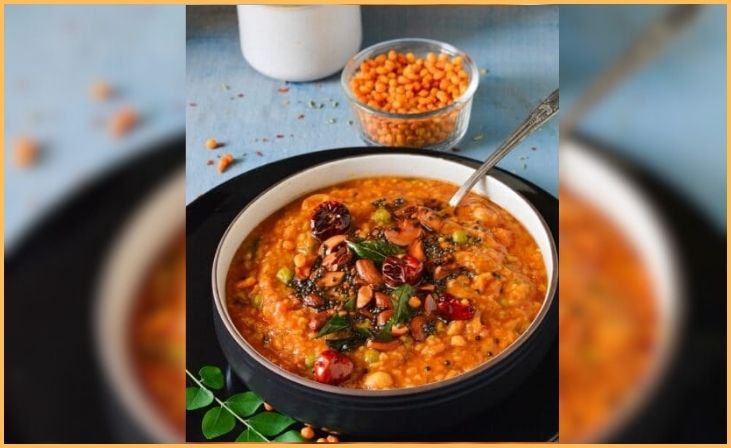
Hailing from Karnataka, Bisi Bele Bath is a culinary masterpiece that orchestrates a symphony of flavors in a single pot. This dish seamlessly combines rice, toor dal, and a distinctive spice blend, resulting in a wholesome and aromatic experience that lingers on the palate. The unique spice blend, including key players like cinnamon, cloves, and nutmeg, contributes to the dish’s complex and delightful taste profile. The marriage of these ingredients not only creates a harmonious blend but also showcases the rich culinary diversity of Karnataka.
Bisi Bele Bath transcends being a mere meal; it’s a sensorial journey that captures the essence of South Indian cuisine. As a one-pot wonder, this dish exemplifies the art of transforming humble ingredients into a culinary delight that is both comforting and rich in tradition. Whether enjoyed hot or at room temperature, Bisi Bele Bath stands as a testament to Karnataka’s culinary prowess and its ability to deliver an unforgettable, flavorful experience.
6. Hyderabadi Khichdi

In the culinary realm of Hyderabad, Khichdi ascends to royal status with the addition of meat, typically mutton or chicken. This regal transformation involves the infusion of fragrant rice, lentils, and a rich array of spices, creating a hearty and flavorful affair fit for royalty. The combination of tender meat and aromatic spices turns Hyderabadi Khichdi into a palatial delight, reflecting the opulence of the Nizami culinary tradition.
The dish stands as a testament to the city’s cultural richness and its ability to turn a simple meal into a regal feast. Each spoonful captures the essence of the royal kitchens, where flavors are crafted with precision and indulgence. Hyderabadi Khichdi, with its regal touch, offers a sensory experience that transcends the ordinary, making it a symbol of the grandeur associated with Hyderabad’s gastronomic heritage.
Read More: 9 One-Pot Dinner Recipes for Easier Mealtime
7. Khichdi from Khichdiwala, Gujarat
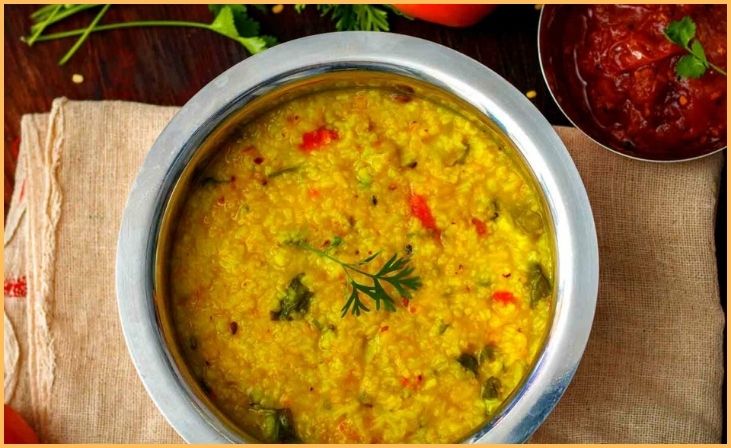
Nestled in Gujarat, the town of Khichdiwala has etched its name in culinary fame by crafting a unique version of Khichdi. This local delicacy, distinguished by its regional touch and a blend of secret spices, sets itself apart in the world of this humble dish. The Khichdi from Khichdiwala embodies the essence of regional flavors, capturing the spirit of Gujarat’s culinary diversity. The carefully guarded spices contribute to the dish’s distinct character, creating a Khichdi that is both a source of local pride and a gastronomic delight.
The town’s culinary mastery transforms a simple dish into a culinary journey that resonates with the rich tapestry of Gujarat’s food culture. Khichdiwala’s version of Khichdi stands as a testament to the town’s culinary prowess, offering a flavorful experience that beckons both locals and visitors alike to savor its unique charm.
Final Thoughts
As we conclude our culinary odyssey through the diverse landscapes of India, the array of Khichdi variations showcases not only the versatility of this humble dish but also the rich tapestry of Indian cuisine. From the hearty simplicity of North India to the spiced complexity of the South, each variation reflects regional nuances and cultural influences. The 7 types of Khichdi presented here underscore the ability of this comfort food to adapt, transform, and bring people together in the celebration of flavors.
FAQs
Absolutely! Khichdi is highly adaptable, and you can adjust the ingredients and spices to match your personal preferences. Experimenting with variations is part of the joy of cooking.
Yes, all the Khichdi recipes featured are vegetarian, showcasing the diverse ways in which grains and lentils can be combined to create delicious and satisfying meals without meat.
Certainly! The recipes provided come with clear instructions, making them accessible even for those new to Indian cooking. Follow the steps, and you’ll be able to enjoy these flavorful Khichdi dishes.
Most of the Khichdi recipes presented are inherently gluten-free and can be adapted to suit a vegan diet by making simple ingredient substitutions. Always check specific dietary requirements and make adjustments as needed.

